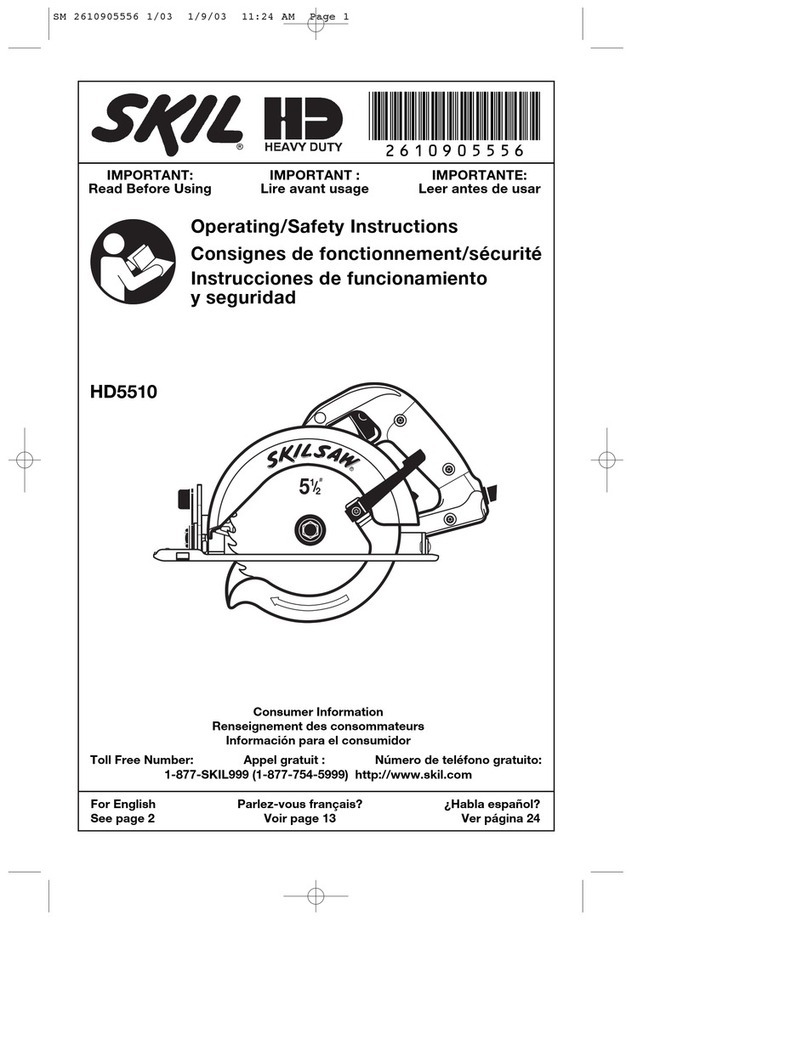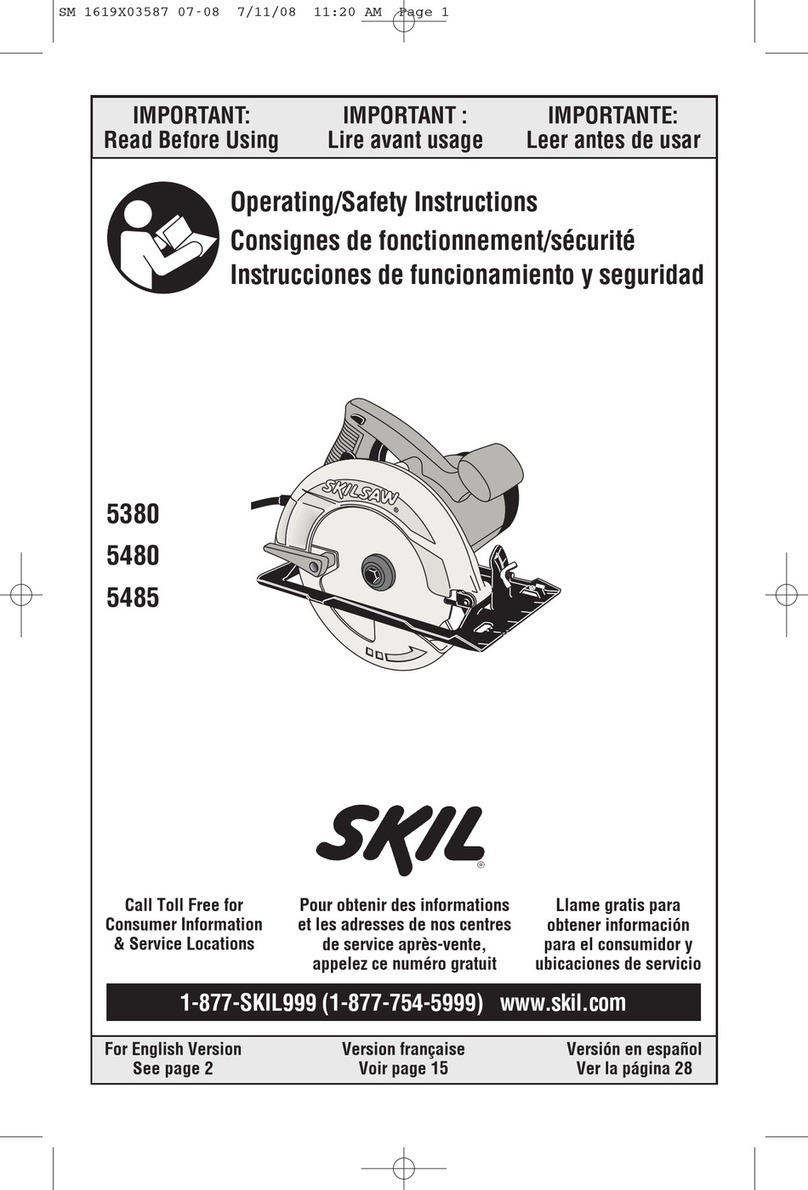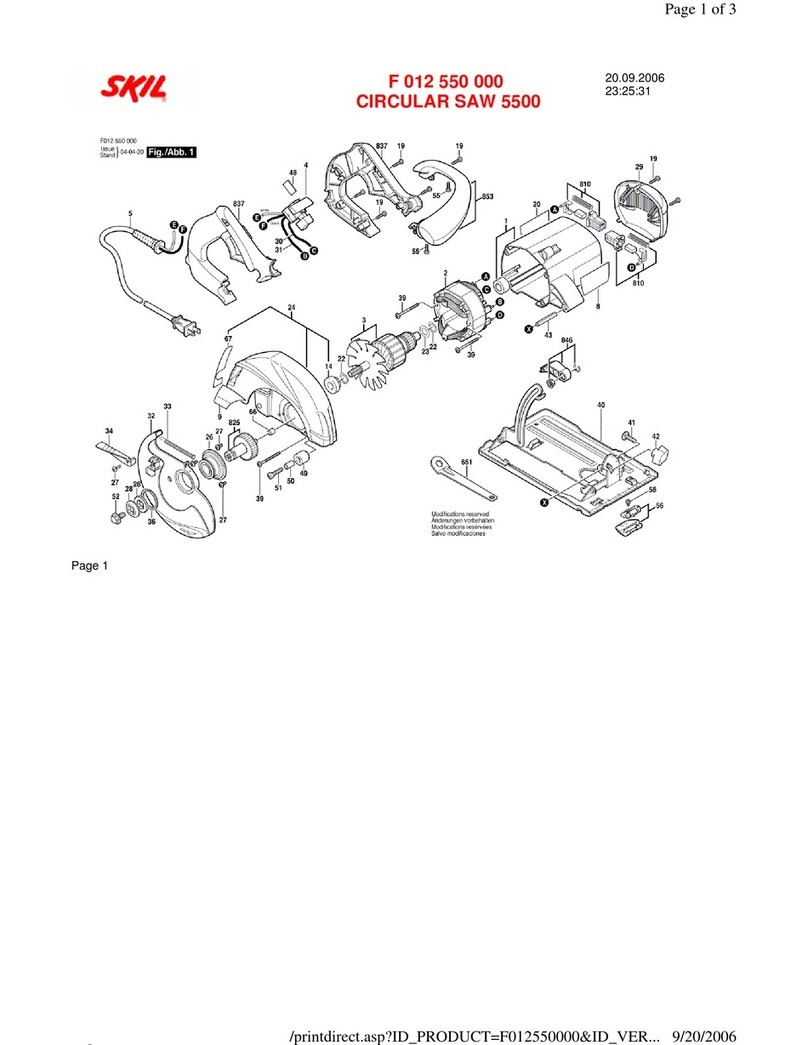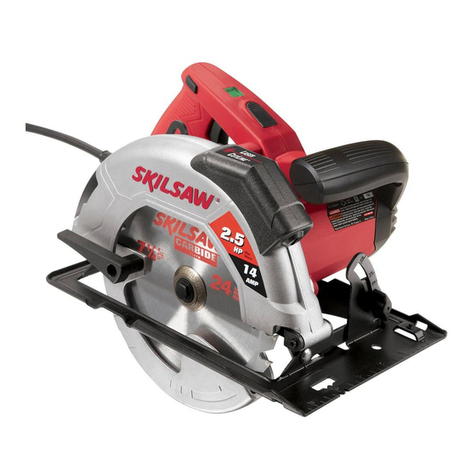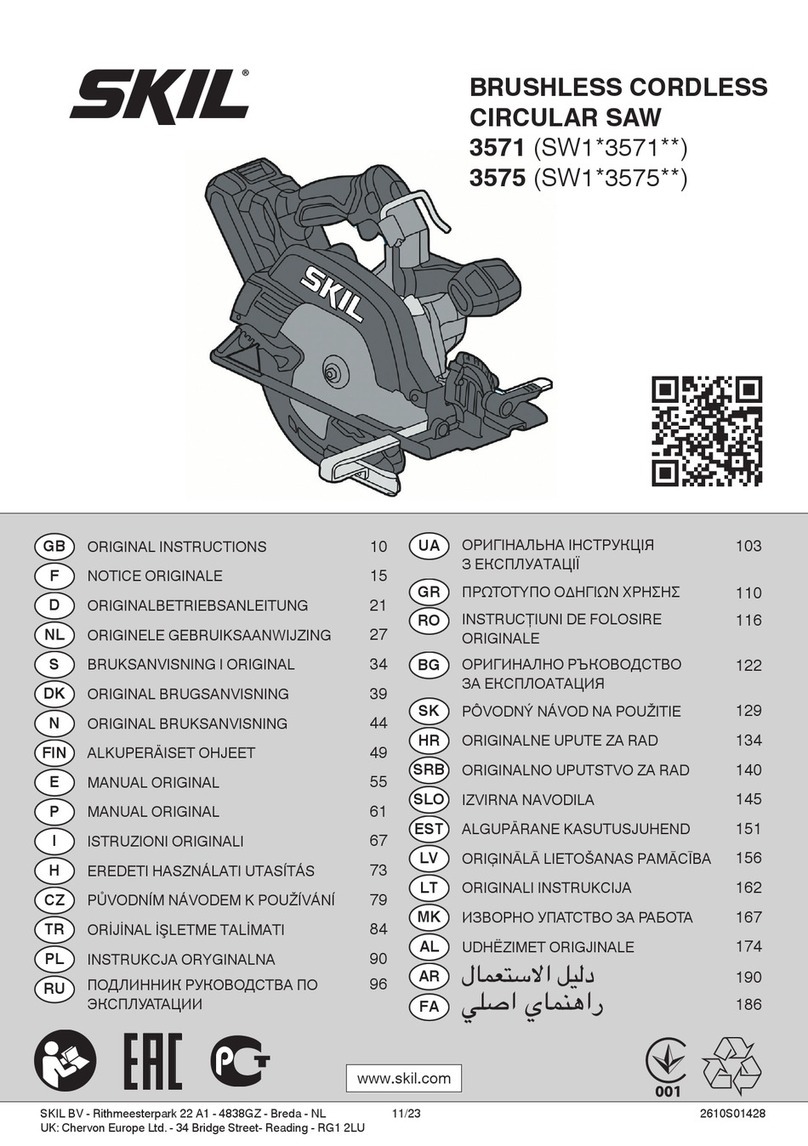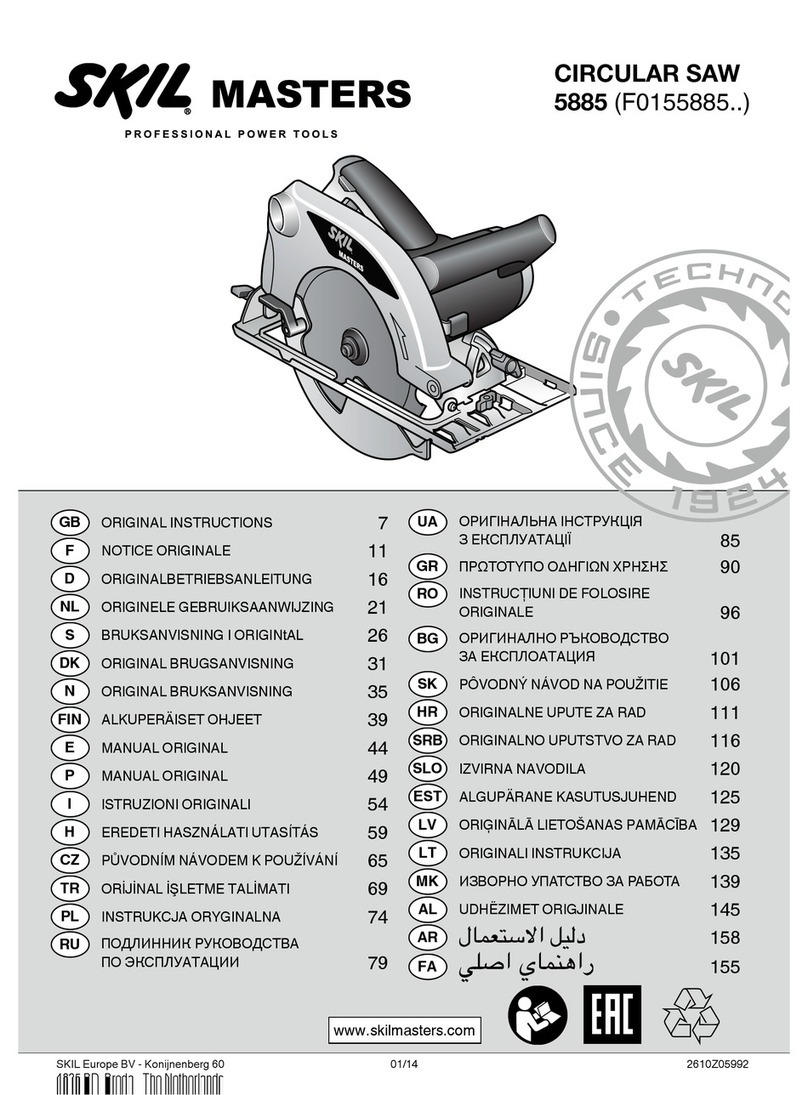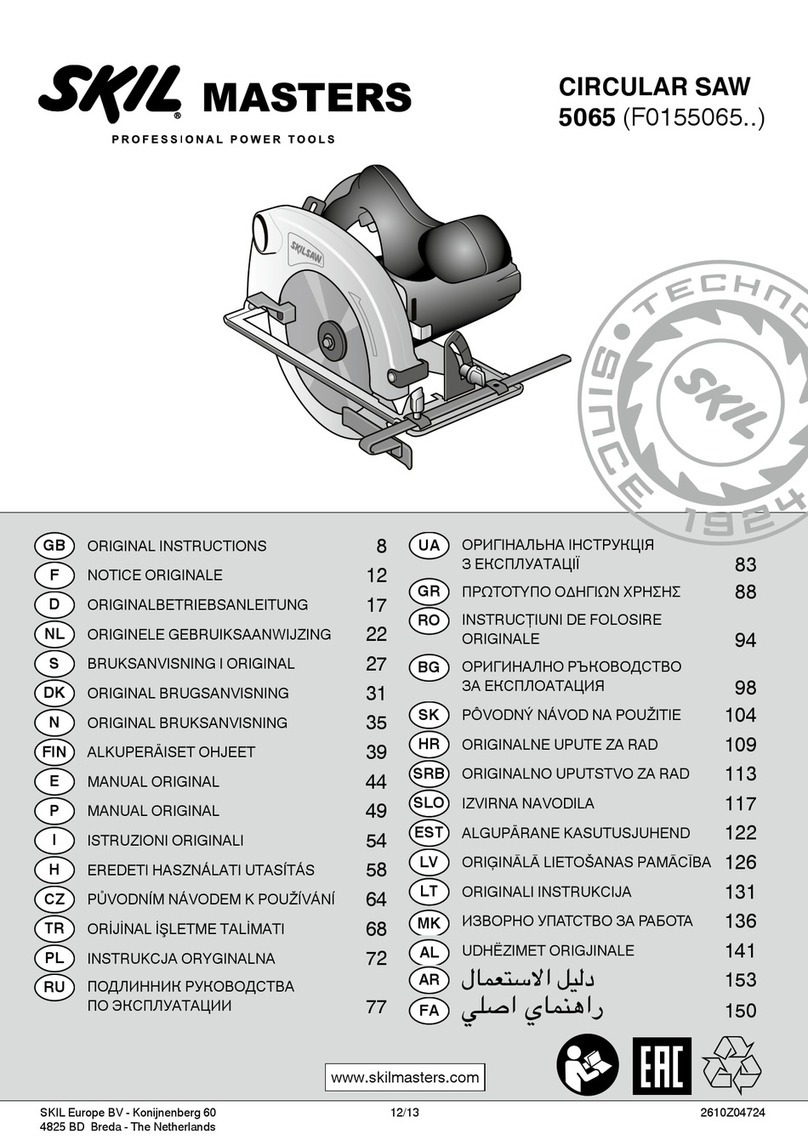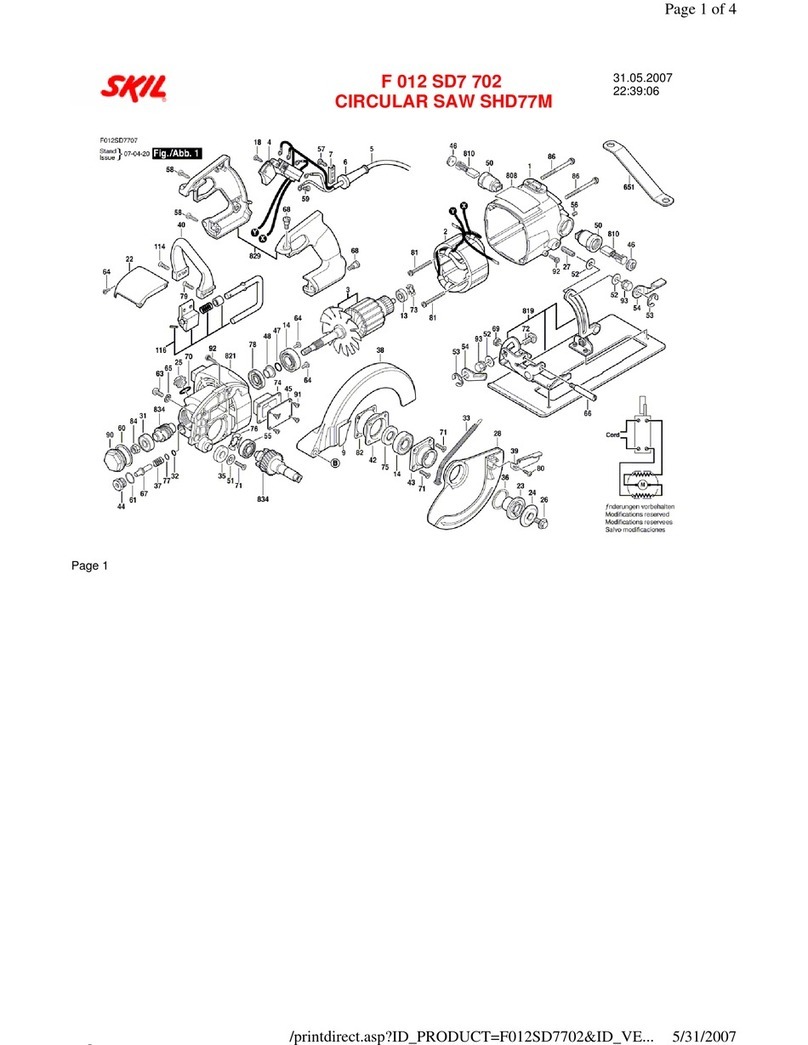8
f) Keep cutting tools sharp and clean. Properly
maintained cutting tools with sharp cutting edges are less
likely to bind and are easier to control.
g) Use the power tool, accessories and tool bits etc., in
accordance with these instructions, taking into
account the working conditions and the work to be
performed. Use of the power tool for operations dierent
from those intended could result in a hazardous situation.
5) SERVICE
a) Have your power tool serviced by a qualified repair
person using only identical replacement parts. This
will ensure that the safety of the power tool is maintained.
SAFETY INSTRUCTIONS FOR RECIPROCATING SAWS
• Avoid damage that can be caused by screws, nails and
other elements in your workpiece; remove them before
you start working
• Always check that the supply voltage is the same as the
voltage indicated on the nameplate of the tool (tools with
a rating of 230V or 240V can also be connected to a
220V supply)
• Use completely unrolled and safe extension cords with a
capacity of 16 Amps (U.K. 13 Amps)
• In case of electrical or mechanical malfunction,
immediately switch o the tool and disconnect the plug
• SKIL can assure awless functioning of the tool only
when the correct accessories are used which can be
obtained from your SKIL dealer
• Use only accessories with an allowable speed matching
at least the highest no-load speed of the tool
• This tool should not be used by people under the age of
16 years
• Do not work materials containing asbestos (asbestos
is considered carcinogenic)
• Dust from material such as paint containing lead, some
wood species, minerals and metal may be harmful
(contact with or inhalation of the dust may cause allergic
reactions and/or respiratory diseases to the operator or
bystanders); wear a dust mask and work with a dust
extraction device when connectable
• Certain kinds of dust are classied as carcinogenic (such
as oak and beech dust) especially in conjunction with
additives for wood conditioning; wear a dust mask and
work with a dust extraction device when connectable
• Follow the dust-related national requirements for the
materials you want to work with
• Keep hands away from cutting area and the blade;
keep your second hand on barrel grip H 2 (if both
hands are holding the saw, they can not be cut by the blade)
• Do not reach underneath the workpiece (the proximity
of the blade to your hand is hidden from your sight)
• Never hold piece being cut in your hands or across
your leg (it is important to support the work properly to
minimise body exposure, blade binding, or loss of control)
• Use clamps or other equipment to secure and
support the workpiece (holding the workpiece in your
hand or against your body may lead to loss of control)
• Hold tool by insulated gripping surfaces when
performing an operation where the cutting tool may
contact hidden wiring or its own cord (contact with a
“live” wire will also make exposed metal parts of the tool
“live” and shock the operator)
• Use suitable detectors to find hidden utility lines or call
the local utility company for assistance (contact with
electric lines can lead to re or electrical shock; damaging a
gas line can result in an explosion; penetrating a water pipe
will cause property damage or an electrical shock)
• Do not use a dull or damaged blade (bent blades can
break easily or cause kickback)
• Keep hands away from between the tool housing and
blade clamp D 2 (the blade clamp can pinch your ngers)
• Ensure that blade clamp D 2is tight before making
a cut (a loose clamp may cause the tool or blade to slip
with loss of control as a result)
• Wear protective glasses and hearing protection 4
• Use protective gloves when removing the blade from
the tool (the saw blade may be hot after prolonged use)
WHEN CONNECTING NEW 3-PIN PLUG (U.K. ONLY):
• Do not connect the blue (= neutral) or brown (= live) wire
in the cord of this tool to the earth terminal of the plug
• If for any reason the old plug is cut o the cord of this tool,
it must be disposed of safely and not left unattended
USE
• On/o 5
• Speed control
With wheel C 2 the sawing speed can be adjusted from
low to high (6 positions)
• Adjusting sawing speed to material used 6
! if the tool does not run with wheel C 2in position
1, select a higher sawing speed and lower the
sawing speed while the tool runs
• Mounting saw blade 7
! disconnect the plug
- press blade clamp D forward and hold it in that position
- insert blade (with teeth facing down or up) to full depth
- release blade clamp D
- pull out blade somewhat until clamp D clicks into a
square position
- push in and pull out blade to check whether it is
locked correctly
! ensure that blade clamp D 2is tight before
making a cut (a loose clamp may cause the tool
or blade to slip with loss of control as a result)
! ensure that the front end of the blade extends
through footplate E for the entire stroke length
• Removing saw blade 8
- press blade clamp D forward and hold it in that position
- pull out blade
- release blade clamp D
• Adjustable footplate 9
- footplate E tilts in order to keep as much of its surface
in contact with the workpiece
- adjust footplate by holding the saw rmly and turning
footplate to desired position
• Blade storage compartment 0
- ensure that storage compartment F is closed to
prevent blades from falling out
• Operating the tool
! securely clamp the workpiece
- mark the cutting line on the workpiece
- select desired sawing speed with wheel C 2
- connect plug to power source (light B turns on
indicating that the tool is receiving power) !


